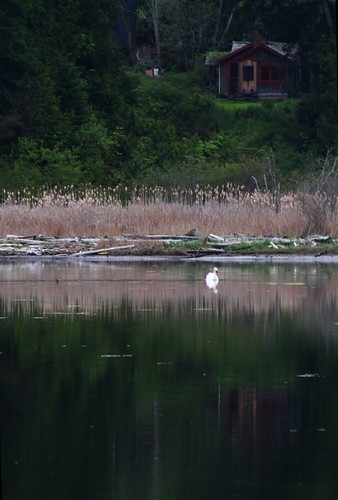
For example, a fungus called cryptococcus gattii has been implicated in the deaths of dozens of harbor porpoises in the Northwest, he said. That same fungus has resulted in the deaths of numerous pets and serious illness for humans. Some researchers believe the fungus was brought to British Columbia in a eucalyptus tree from Australia, where the fungus is native. Spores may have washed into stormwater flowing into the Georgia Basin, which connects with Puget Sound. Nobody can say whether the seven deaths of orcas this year were connected to cryptococcus or any other organism, because none of the carcasses were found. Researchers did obtain a blubber sample of one emaciated whale that later disappeared. They are waiting for test results to see if a cause of death can be determined. "One thing we want to learn," said Bain, "is whether there is a correlation between the number of species (of bacteria) and the mortality rates of the whales," he said. In other words, are the individuals with a greater bacterial load at greater risk of getting sick and dying? Schroeder, a marine mammal veterinarian, said two groups of bacteria found by the researchers are of great concern. They are the Vibrios and Claustridiums, which are known to cause death in immune-compromised individuals. "The same biological rule holds true in people and in animals," he said. "You can carry these pathogens around, but they have to get into your system through an open wound. Even then, you might fight them off if your immune system is in good shape." One concern for the orcas, however, is that they contain some of the greatest concentrations of toxic chemicals of any marine mammals in the world. The chemicals include polychlorinated biphenyls, believed to impair the immune system. Another factor that could weaken the whales is a shortage of salmon, which can cause them to use up their fat reserves in search of food. Lack of salmon has been mentioned frequently as a likely factor in the seven recent deaths. Bain, Schroeder and their colleagues in British Columbia have not found major changes in the bacteria they discovered during their three-year study of the Puget Sound whales, known as Southern Residents.
They would like to continue the research, which is funded by the National Marine Fisheries Service, and include Northern Residents, a related group of orcas in British Columbia. Schroeder said the bacterial counts in water and orcas could become an important indicator of ecosystem health. One reason he and Bain have begun talking about their unpublished research is to get the attention of the Puget Sound Partnership, which is putting together an Action Agenda for restoring Puget Sound. "My standpoint as a veterinarian is that I want to find out if we can prevent these animals from becoming ill," Schroeder said. "If we identify enough of these antibiotic-resistant bacteria, we can start source studies." Tracking the bacteria to their sources — possibly sewage-treatment plants, boat discharges and urban stormwater — could be the key to reducing the orca's exposure to the dangerous pathogens, Schroeder said. Sewage from the city of Victoria is released practically untreated into waters not far from where the whales spend much of their summers. "That," said Schroeder, "is the elephant in the room." Treating the whales for illness is beyond the realm of current research. Schroeder has worked with whales and dolphins in captivity where blood tests reveal the health of an individual. In wild "herd animals," such as orcas, signs of illness may go unrecognized until an individual is so ill that it drops out of its group. If a wild whale could be diagnosed in time, Bain said it could open the door to using the appropriate antibiotics to treat the disease and reduce the risk of wiping out the entire population. That level of manipulation is sure to generate controversy. But knowing that the orcas are surrounded by unnatural bacteria, as well as a variety of man-made chemicals, could change management goals for saving the whales.
source - Kipsap Sun
















































